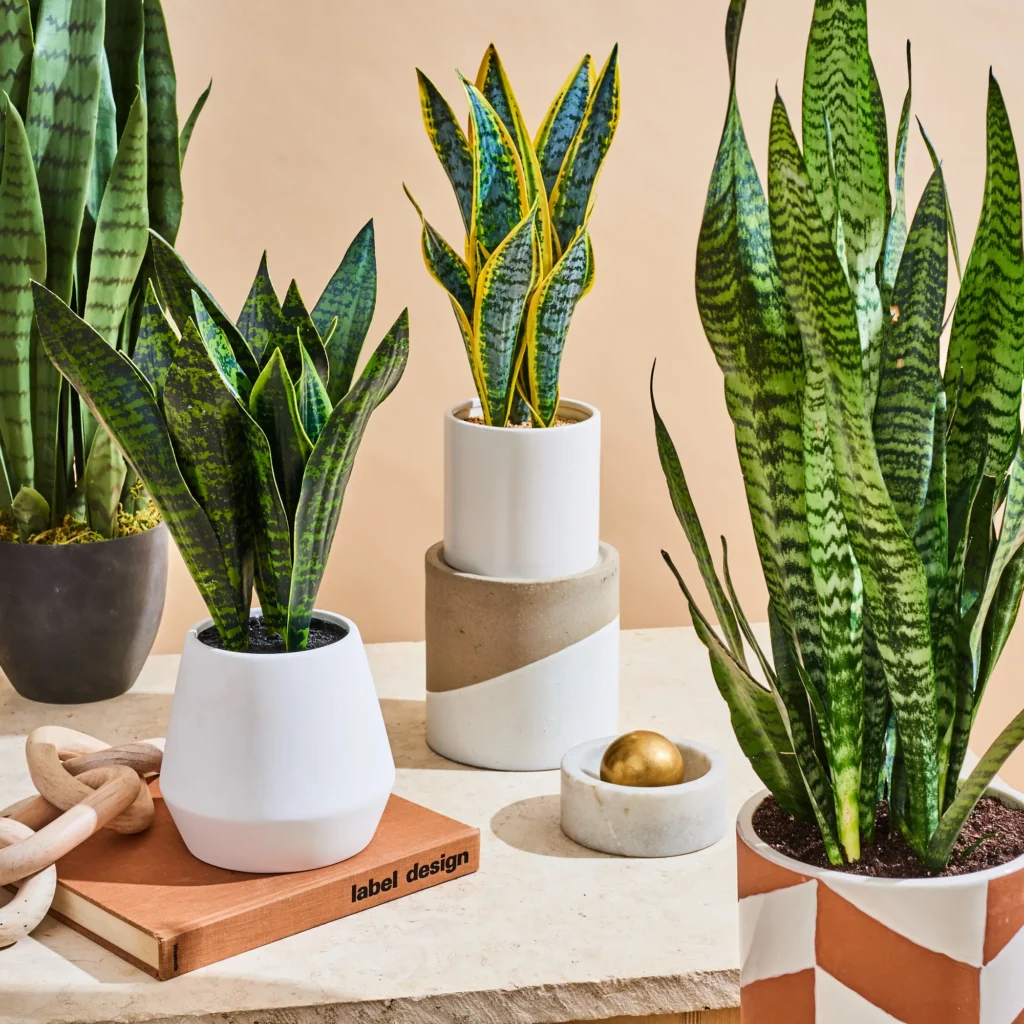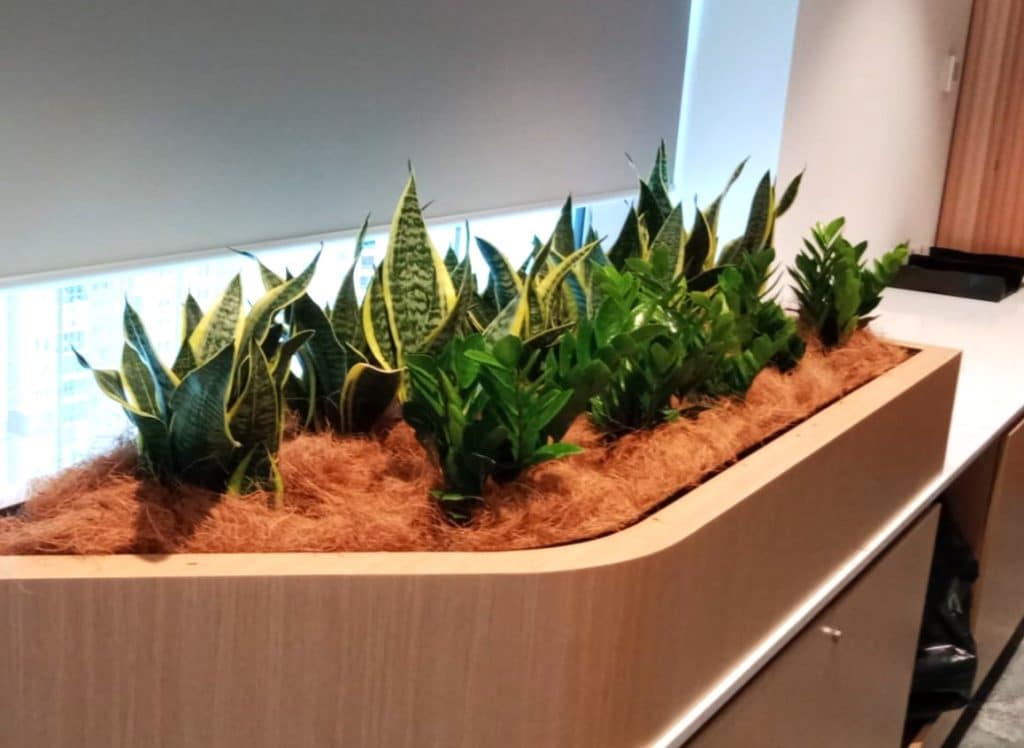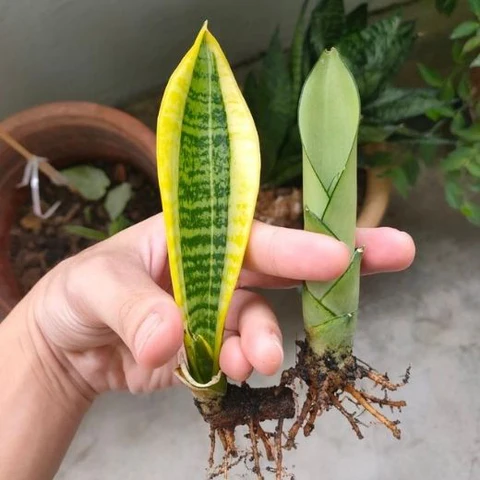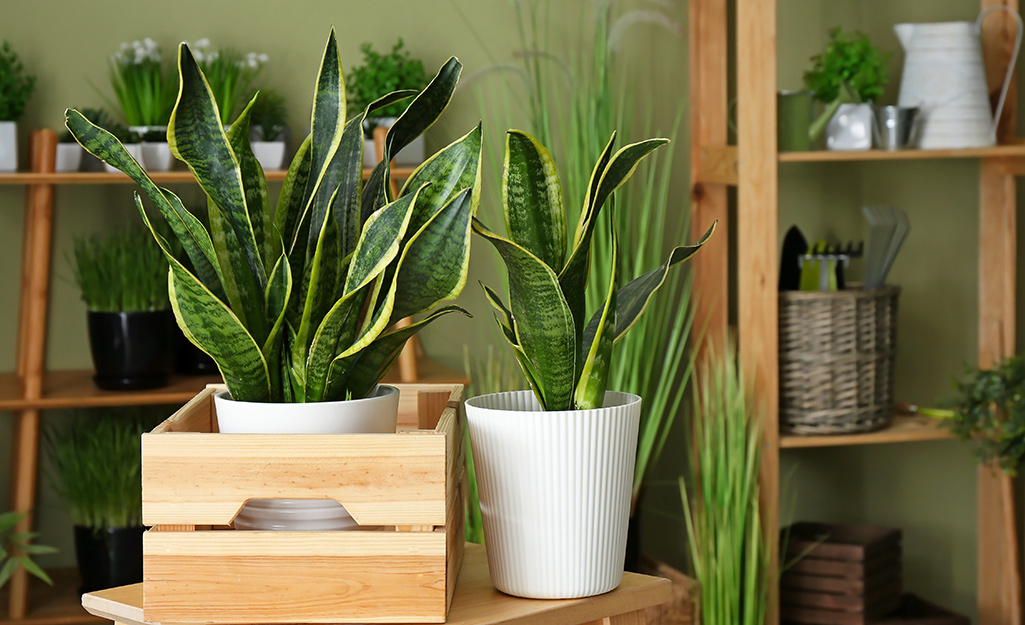Snake plants, also known as Sansevieria or Dracaena trifasciata, are among the most popular indoor plants—and for good reason. Their sword-like, upright leaves, tolerance for neglect, and ability to purify the air make them ideal companions for homes and offices. But while snake plants are low-maintenance, they still require proper care to truly thrive indoors. Whether you’re a beginner or a seasoned plant enthusiast, this complete guide will show you how to keep your snake plant happy and healthy all year round.
1. Choose the Right Pot and Soil

Pot:
Select a pot with good drainage holes. Snake plants hate sitting in water, and poor drainage can quickly lead to root rot.
Tip: Use a terracotta or unglazed clay pot. These materials help wick moisture away from the roots and prevent overwatering.
Soil:
Use a fast-draining potting mix. A cactus or succulent mix is ideal. You can also make your own by combining:
- 2 parts potting soil
- 1 part perlite
- 1 part coarse sand
Avoid rich or heavy soil that holds water for too long.
2. Perfect Your Watering Routine

Snake plants are drought-tolerant and prefer to be on the dry side.
How Often to Water:
- Spring & Summer: Every 2–4 weeks
- Fall & Winter: Every 4–6 weeks (or less, depending on humidity)
Key Rule: Always let the soil dry out completely between waterings.
Overwatering Signs:
- Yellow, mushy leaves
- Foul smell in the soil
- Soft or collapsing base
Underwatering Signs:
- Wrinkled or curling leaves
- Dry, crispy tips
Use your finger or a moisture meter to test the top 2–3 inches of soil before watering.
3. Provide the Right Lighting
Snake plants can adapt to various light levels, but the best growth occurs under bright, indirect light.
Ideal Light Conditions:
- Near a north- or east-facing window
- Filtered sunlight through curtains
- Artificial grow lights (if needed)
Avoid:
- Harsh, direct sunlight (can scorch leaves)
- Extremely dark corners (slows growth and weakens the plant)
Pro Tip: Rotate the plant every few weeks to ensure even light exposure and balanced growth.
4. Maintain the Right Temperature and Humidity
Snake plants are tropical natives, so they enjoy warm, stable conditions.
Ideal Temperature:
- Between 60–85°F (16–29°C)
- Avoid sudden cold drafts or placing near heating/cooling vents
Humidity:
- Normal indoor humidity (30–50%) is fine
- No need for misting or humidifiers unless your space is extremely dry
Keep your snake plant away from windows during frost and never let it sit in temperatures below 50°F (10°C).
5. Feed Occasionally

While snake plants aren’t heavy feeders, occasional fertilizing helps promote new growth.
Best Fertilizer:
- Balanced 10-10-10 or 20-20-20 liquid houseplant fertilizer
- Diluted to half-strength
Fertilizing Schedule:
- Spring to early fall: Once every 4–6 weeks
- Winter: Skip feeding entirely
Too much fertilizer can burn roots or cause overly leggy growth, so less is more.
6. Keep It Clean
Dust can accumulate on snake plant leaves, reducing their ability to photosynthesize.
Cleaning Steps:
- Wipe leaves with a damp microfiber cloth
- Use diluted mild soap if needed
- Avoid leaf-shine products that clog pores
Regular cleaning not only keeps your plant looking good but also improves its air-purifying performance.
7. Repot When Necessary

Snake plants like being root-bound, but they’ll eventually outgrow their pots.
When to Repot:
- Every 2–3 years
- Roots are growing out of drainage holes
- Soil no longer drains well
Use a pot 1–2 inches wider in diameter and refresh the soil mix when repotting.
8. Watch for Common Pests and Problems
Snake plants are resilient but not immune to pests and diseases.
Common Pests:
- Mealybugs: Cottony clusters at leaf bases
- Spider mites: Fine webbing, stippling on leaves
- Fungus gnats: From overwatered soil
Solution: Spray with neem oil, insecticidal soap, or wipe with alcohol-soaked cotton.
Common Diseases:
- Root rot (from overwatering)
- Leaf spot (fungal infections)
Keep an eye on your plant’s health and act quickly when issues arise.
9. Propagate and Multiply

Want more snake plants? Propagation is simple!
Methods:
- Division: Separate clumps during repotting
- Leaf Cuttings in Water: Cut a healthy leaf, place in water until roots grow
- Leaf Cuttings in Soil: Cut into 3-inch sections, plant upright in moist soil
Propagation is slow but satisfying and allows you to expand your indoor garden or share plants with friends.
10. Display It with Style
The upright, architectural look of snake plants fits nearly any interior style.
Display Tips:
- Use minimalist ceramic pots for a modern look
- Group with trailing plants for contrast
- Try tall varieties like ‘Laurentii’ in corners or small ones like ‘Hahnii’ for tabletops
Snake plants also thrive in office settings, bedrooms, or entryways where low light might discourage other plants.
Final Thoughts
The snake plant is a hardy, forgiving houseplant that can elevate your indoor space with minimal fuss. With the right care—proper watering, lighting, and occasional feeding—you can keep your plant healthy and thriving for many years. It’s ideal for anyone seeking a stylish, low-maintenance green companion.
Whether you’re a plant parent newbie or a houseplant collector, the snake plant proves that beauty doesn’t need to be complicated.







Leave A Comment